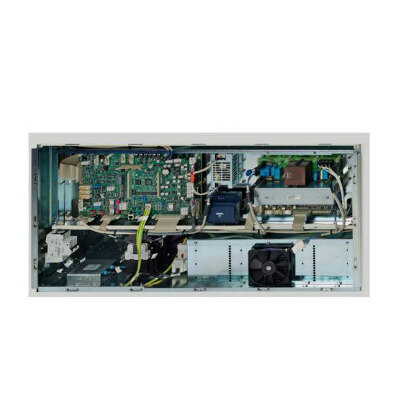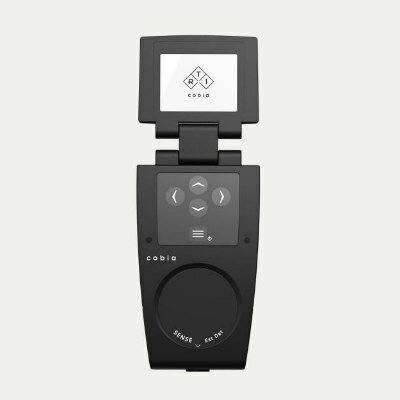MRI Sensor Provides Molecular View of the Brain
By MedImaging International staff writers
Posted on 02 Apr 2010
Neuroscientists have designed a new magnetic resonance imaging (MRI) sensor that responds to the neurotransmitter dopamine, an accomplishment that may significantly improve the specificity and resolution of future brain imaging procedures. Posted on 02 Apr 2010
Although functional magnetic resonance imaging (fMRI) has enhanced the understanding of brain function since it was first introduced about 20 years ago, the technology in fact measures blood flow, which is a slow and indirect readout of neural activity. When a brain region becomes active, blood vessels in that region dilate, causing increased blood flow to the site. Iron found in the blood's hemoglobin mediates a magnetic change that is detected by MRI.
But MRI sensors that directly and rapidly respond to chemicals involved in the brain's data processing would provide a much more precise measurement of brain activity. This technology has not been available until now. "We have designed an artificial molecular probe that changes its magnetic properties in response to the neurotransmitter dopamine,” explained Dr. Alan Jasanoff, an associate professor of biological engineering at the Massachusetts of Technology (MIT; Cambridge, MA, USAu) and senior author of the article describing the study, published February 28, 2010, is the journal Nature Biotechnology. "This new tool connects molecular phenomena in the nervous system with whole-brain imaging techniques, allowing us to probe very precise processes and relate them to the overall function of the brain and of the organism. With molecular fMRI, we can say something much more specific about the brain's activity and circuitry than we could using conventional blood-related fMRI.”
Measuring dopamine in the living brain is of particular interest to neuroscientists because this neurotransmitter plays a role in motivation, reward, addiction, and several neurodegenerative conditions, including Parkinson's disease. To design a molecular probe that binds to dopamine, Dr. Jasanoff''s group, in collaboration with MIT Institute Prof. Robert Langer and the laboratory of Frances Arnold at the California Institute of Technology (Caltech; Pasadena, USA), borrowed an evolutionary gimmick. Beginning with a magnetically active protein similar to hemoglobin, the researchers demonstrated that it could be visualized by MRI, and then "evolved” the protein--through rounds of artificial mutation and selection--to bind specifically to dopamine.
"By harnessing the power of protein engineering we now have the ability to advance neuroscience through more precise noninvasive imaging of the brain,” said Dr. Mikhail Shapiro, joint first author of the study and a former graduate student supervised by Dr. Jasanoff and Prof. Langer. Dr. Shapiro devised the directed evolution approach used to make MRI sensors in the study.
After validating that the protein responded to dopamine produced by cells in test tubes, the researchers tested whether it could detect dopamine in the living brain. They found a change in the MRI intensity precisely when they artificially triggered dopamine release in the presence of the sensor. "This means that we can see signal changes in the brain due to the modulation of dopamine,” explained Dr. Gil Westmeyer, joint first author of the study and a postdoctoral fellow in Dr. Jasanoff's lab who directed the in vivo research. "This novel MRI sensor will enable us to study the spatial and temporal patterns of dopamine transmission over the vast and heterogeneous dopamine network in the brain.”
Dr. Jasanoff's team will now use the new MRI sensor to study how the spatial and temporal patterns of dopamine release relate to an animal's experience of reward, learning, and reinforcement. They hope to develop a related suite of new tools to detect different molecular events across the whole brain, and they expect to see additional gains in sensitivity through improved experimental paradigms and further molecular engineering.
While synthetic molecules are typically introduced into the brain with external devices, Dr. Jasanoff's new sensor is based on a protein, which means that researchers may also have the ability to encode genetically the sensor to express on its own. The new dopamine sensor is an important tool for animal research, but the researchers also hope one day to develop agents that can measure neural activity in the human brain.
Related Links:
Massachusetts of Technology














